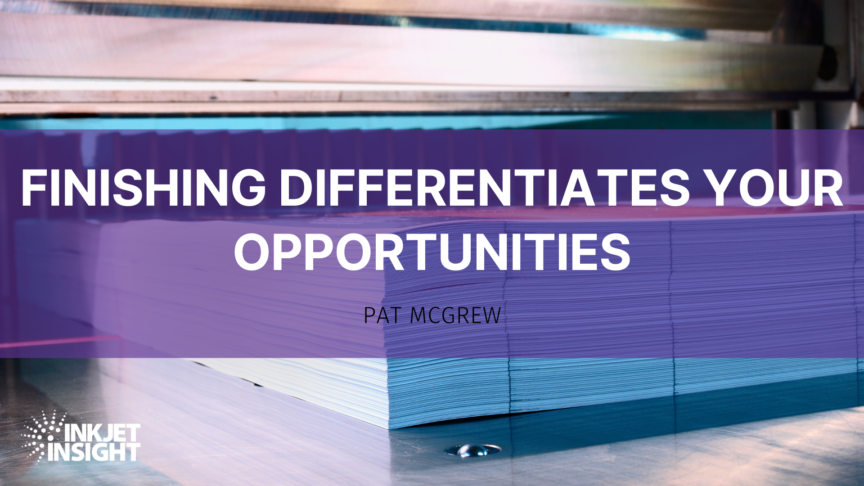Finishing can be your differentiator, but you will have to think differently to make it fly. Beyond the solutions to cut, perf, fold, insert, and bind, consider some of the other options in the market.
More than fifteen years ago, there was a company called Megaspirea. They announced a product called the Mailliner 100, built to work in high-speed continuous printing environments. The goal was to merge the content file with a file containing the data needed for the envelope. That envelope print stream contained the address and targeted marketing content for the outside of the envelope. That merged file would print and then route to the Mailliner for an Edward Scissorhands event that resulted in a fully addressed mail packet targeted to an individual recipient. The beauty of the solution was that the envelope could be completely customized with color and personalized with variable data, the same as the contents. And it was designed to run at about 21,000 packets per hour.
The Megaspirea made an appearance at IPEX 2006 in Birmingham, UK. It looked like it might shepherd in a new era of complex equipment that leveraged the power and speed of full-color inkjet printing paired with complex finishing to add efficiency. It didn’t quite work out that way. Within a few years, the company was off the radar, and we were back to the usual solution offers. Megaspirea was a bit ahead of its time, but it planted a seed. Good ideas don’t die. They just hibernate.
In the last couple of years, the seeds began growing into finishing solutions that offer more options. As noted in a previous article, cutters, prefers, stackers, and unwind/rewind offerings continue to get faster and now share data with business dashboards, making them more intelligent.
There are also new solutions coming to market to keep your eye on as you plan your shop floor upgrades. One of the options is to create a workflow that takes the digitally printed contents, and wraps the contents creating the envelope, and then prints messaging or graphics in addition to the address information. One solution that has emerged, and is currently in production in inkjet print sites, is the CMC JWR, which makes the envelope as part of the insertion process. The JWR solution runs at 22000 or 23000 packets per hour depending on the model and has happy customers using it to streamline their print shops.
Another option is the CMC ONE, an extension of the JWR that opens the door to offering film and paper for newspapers, magazines, catalogs, and other marketing collateral sent through the mail. Products like the CMC JWR and CMC One can make you the master of your supply chain. You can offer customers options for this style envelope so that they can add messaging, but it also eliminates some of the costs and wait times of waiting for envelopes to come from a supplier. It brings flexibility, and that is also a differentiator in the current market.
Look for options like these that allow you to finish in ways that enable new products. Beyond products like CMC offerings, look for machines that will allow you to offer unique folds and creases. Most of the newer inkjet devices can print on very lightweight paper, which could open the door to becoming a supplier of Instructions for Use (IFU), those tightly folded inserts into pharmaceutical and chemical products. It takes adding finishing to handle the multiple creases and folds to create the final, very small insert.
If none of these solutions sound right for you, look at the customers you serve. Talk to them to see if they are looking for more finishing options, and if so, what they would like. It might be different types of folds, inserts, or binding. Or they may be looking for those things we classify as enhancement, like coating. The goal is to find the things your customers want to buy and set a path to supply it.

